The Tapanuli orangutan was recognised as a new species less than two years ago but is already under threat from a hydroelectric dam project that will impact its Sumatran forest home. Tim Laman’s images reveal the beauty and fragility of the rarest great ape in the world.
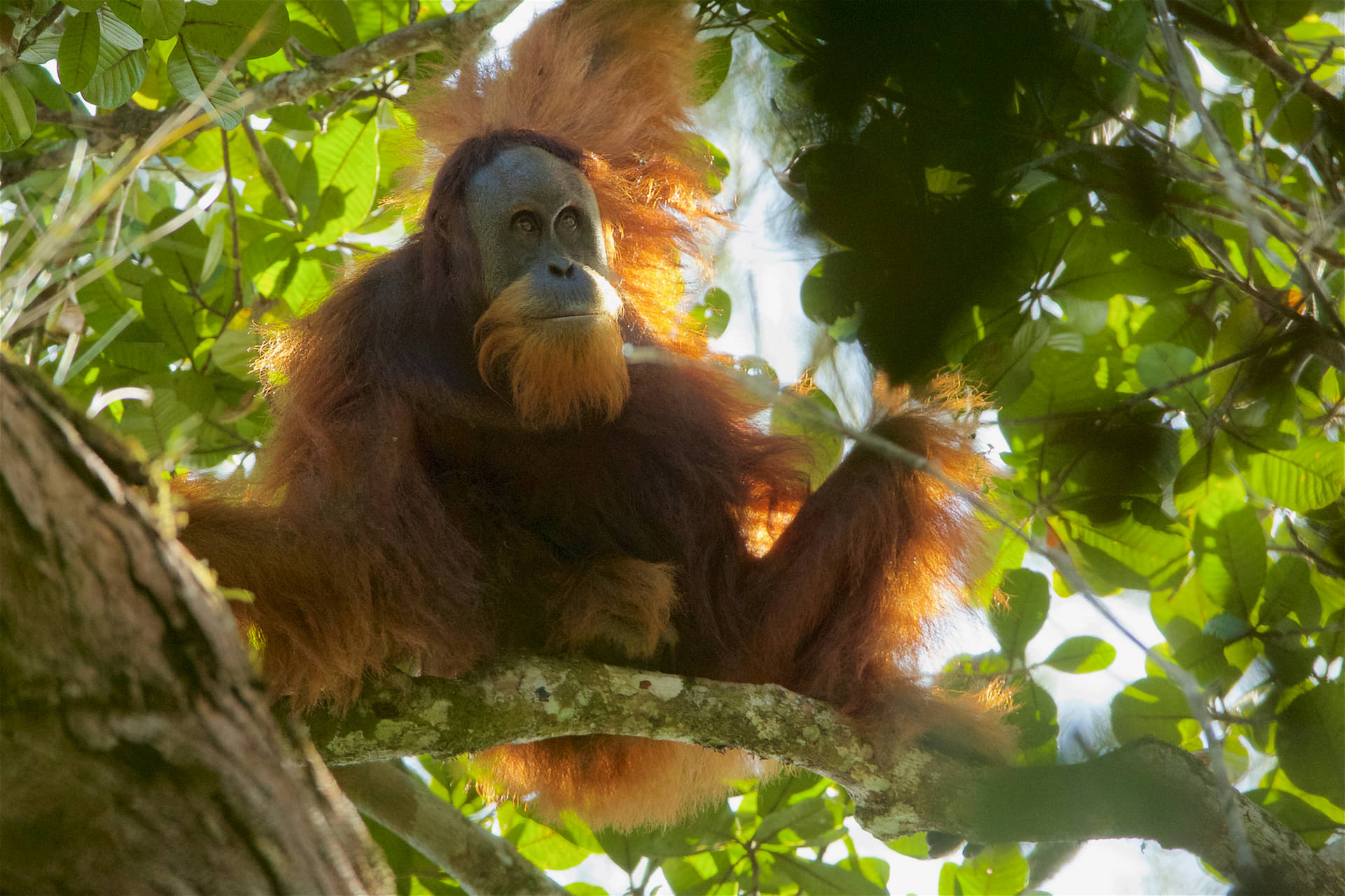
A male Tapanuli orangutan has a bad hair day, his reddish fur flying in the breeze of northern Sumatra, Indonesia. In November 2017, Pongo tapanuliensis was confirmed as a separate species, genetically, behaviourally and physically distinct from the Sumatran and Bornean species. Its fur is frizzier than the loose locks of Sumatran orangutans living north of Lake Toba, and a more cinnamon colour All images: Tim Laman/naturepl.com than its Bornean cousins.
BELOW Beti, a juvenile female aged about six, drinks water from a pitcher plant – behaviour not observed in the other two species. It wasn’t until 1997 that this species really came to light. The population has been studied intensively since 2005, leading to the description of the new species two years ago, when it was also classified as Critically Endangered – it’s thought no more than 800 are left.
RIGHT A Tapanuli male named Togus relaxes in Batang Toru (Harangan Tapanuli in the local Batak language), where his species is restricted to around 1,100km of upland forest. His prominent soft cheek pads, known as flanges – which appear in some males from the age of about 20 years – are visible expressions of sexual dominance.
LEFT Beta, mother of Beti, peers down from the high canopy. Female orangutans first breed at about the age of 12, producing one or, occasionally, two ospring at intervals of around eight or nine years. With such a slow reproductive rate, numbers of these great apes recover extremely slowly from any population loss.
هذه القصة مأخوذة من طبعة September 2019 من BBC Wildlife.
ابدأ النسخة التجريبية المجانية من Magzter GOLD لمدة 7 أيام للوصول إلى آلاف القصص المتميزة المنسقة وأكثر من 9,000 مجلة وصحيفة.
بالفعل مشترك ? تسجيل الدخول
هذه القصة مأخوذة من طبعة September 2019 من BBC Wildlife.
ابدأ النسخة التجريبية المجانية من Magzter GOLD لمدة 7 أيام للوصول إلى آلاف القصص المتميزة المنسقة وأكثر من 9,000 مجلة وصحيفة.
بالفعل مشترك? تسجيل الدخول
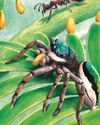
Jump Around - Bagheera Kiplingi - The acrobatic spider with a predilection for veggie food
Spiders eat flies, right? everyone knows that the 45,000 or so spiders in the world are all obligate carnivores, more or less – eating other animals, mainly invertebrates. Nature, however, loves an exception, and one particular spider missed out on that ecological memo. It goes by the wonderful scientific name of Bagheera kiplingi, and its claim to fame is that its diet is – at least mostly – vegetarian.

Female of the Species - Zebras - A strong sisterhood is key to staying safe
Zebras are masters of confusion. Their collective noun is ‘a dazzle’, which is fitting since their bodies and behaviour have been surprising scientists for centuries.
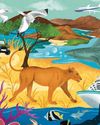
See It, Save It? - Wildlife tourism can be a powerful ally in protecting nature - but it can also harm it. We weigh up the pros and cons.
The sums of wildlife travel aren’t as simple as more tourists equals happier nature. How much did my visit really contribute to the conservation of Lady Liuwa and her habitat – and was that outweighed by carbon emissions from my flights? Did my presence disturb the animals’ natural behaviour more than it reduced the threat of poaching or benefited local communities?The question of whether wildlife travel is, on balance, good for wildlife is a complex one – and there’s no simple answer.

Can Your Really Offset Emissions? - Planning an overseas wildlife-watching trip entails facing some inconvenient truths
Imagine (or maybe you don't need to) that you hanker after the safari trip of a lifetime in sub-Saharan Africa. A 17-day tour beginning at the iconic Victoria Falls, passing through Zimbabwe, Zambia, Malawi and Tanzania, taking in some of the continent’s most wildlife-rich national parks, and ending on the lush island of Zanzibar.

Metamorphosis: a life-changing event
WITH EVOLUTIONARY BIOLOGIST JV CHAMARY
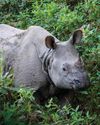
New series for BBC One: Asia
Settle in this autumn for a new natural-history extravaganza on BBC One and iPlayer: the longawaited Asia, presented by Sir David Attenborough.
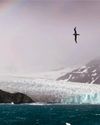
Loss of Antarctic sea ice could impact seabird food supply
Albatrosses and petrels may be forced to fly further to feed
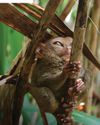
Tarsiers in trouble
Urgent action is needed to ensure survival of the Yoda-like primate

SNAP-CHAT
Chien Lee on shrew loos, rogue drones and being rained out of bed

VISIONS OF NATURE
The winners of the Wildlife Artist of the Year competition 2024, from David Shepherd Wildlife Foundation